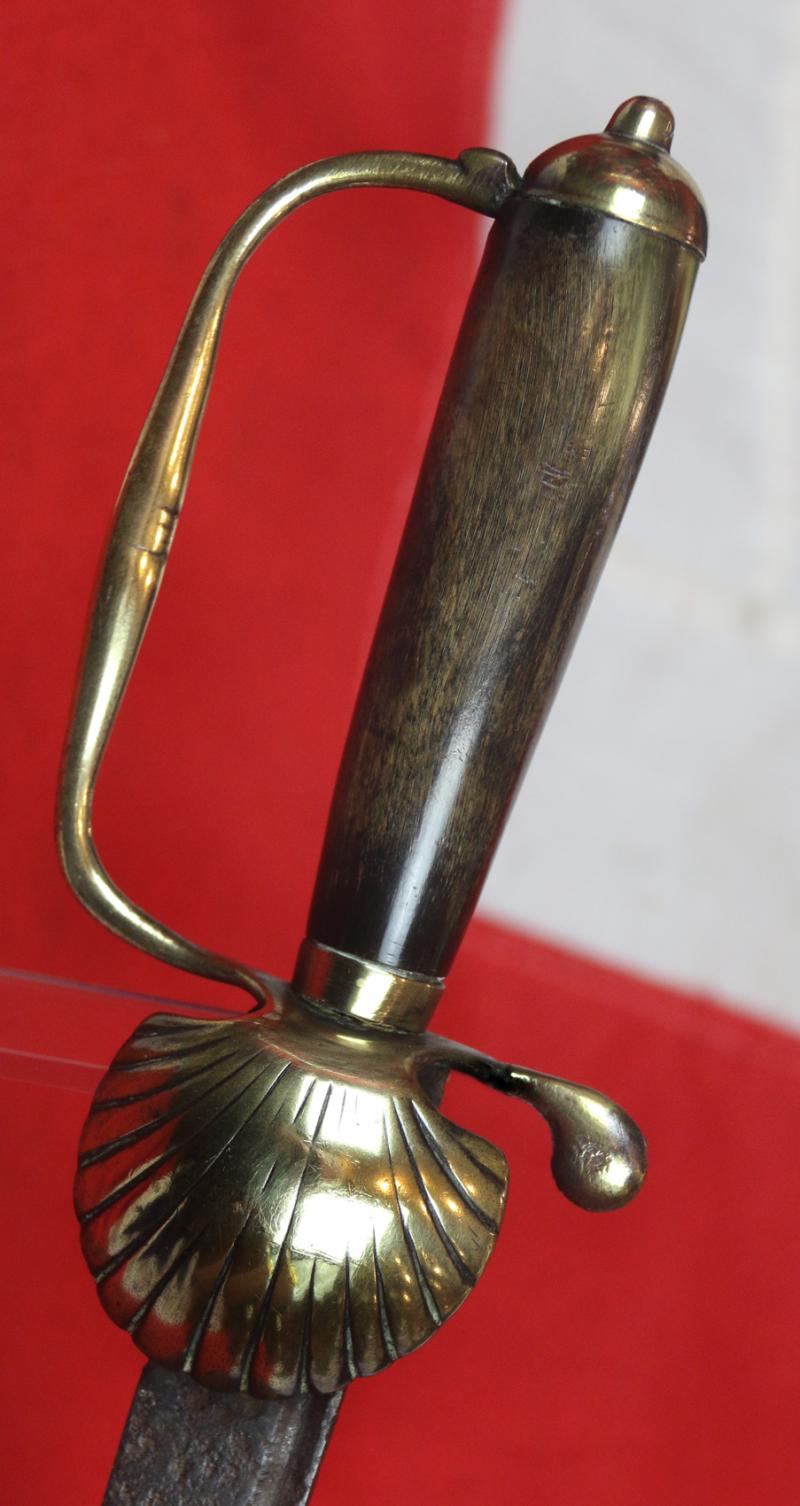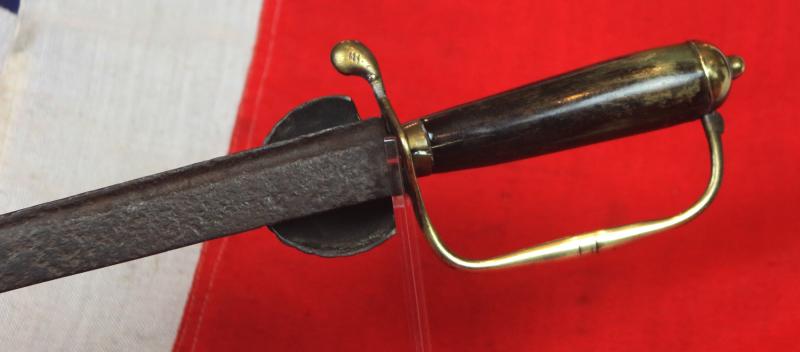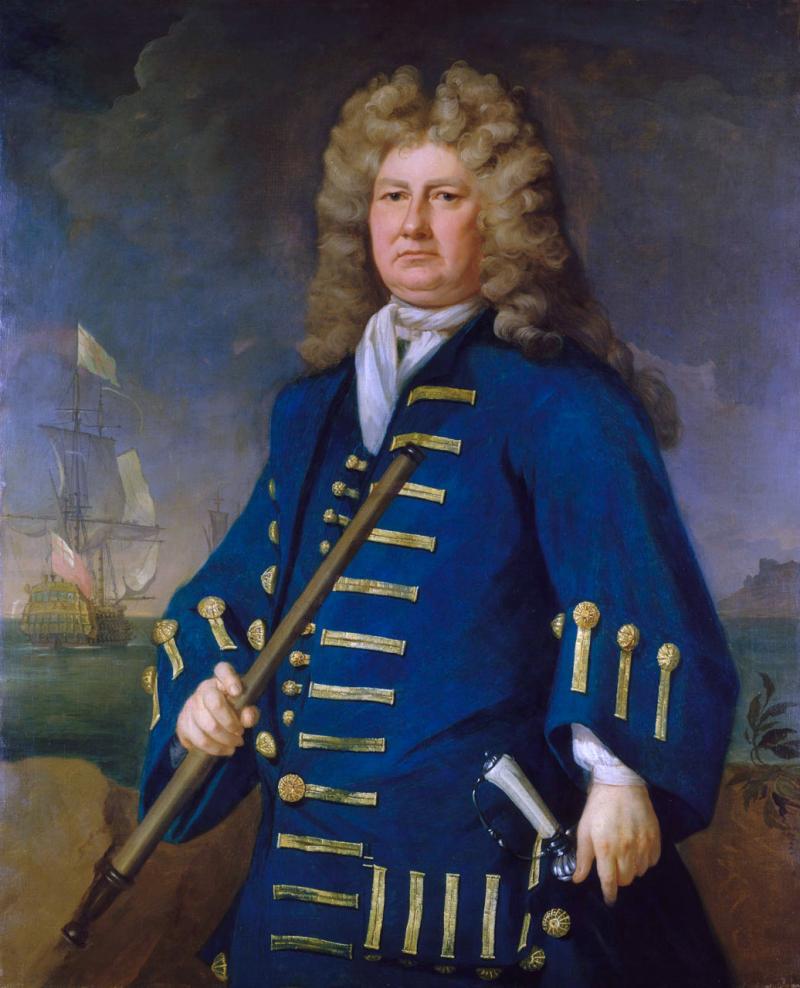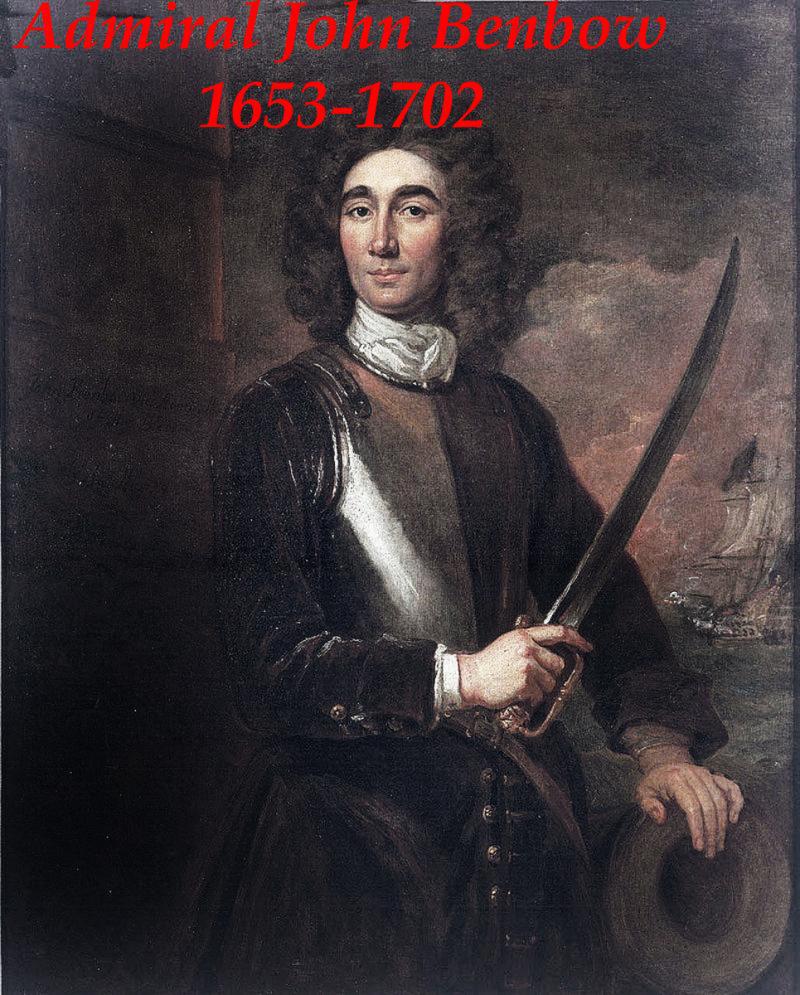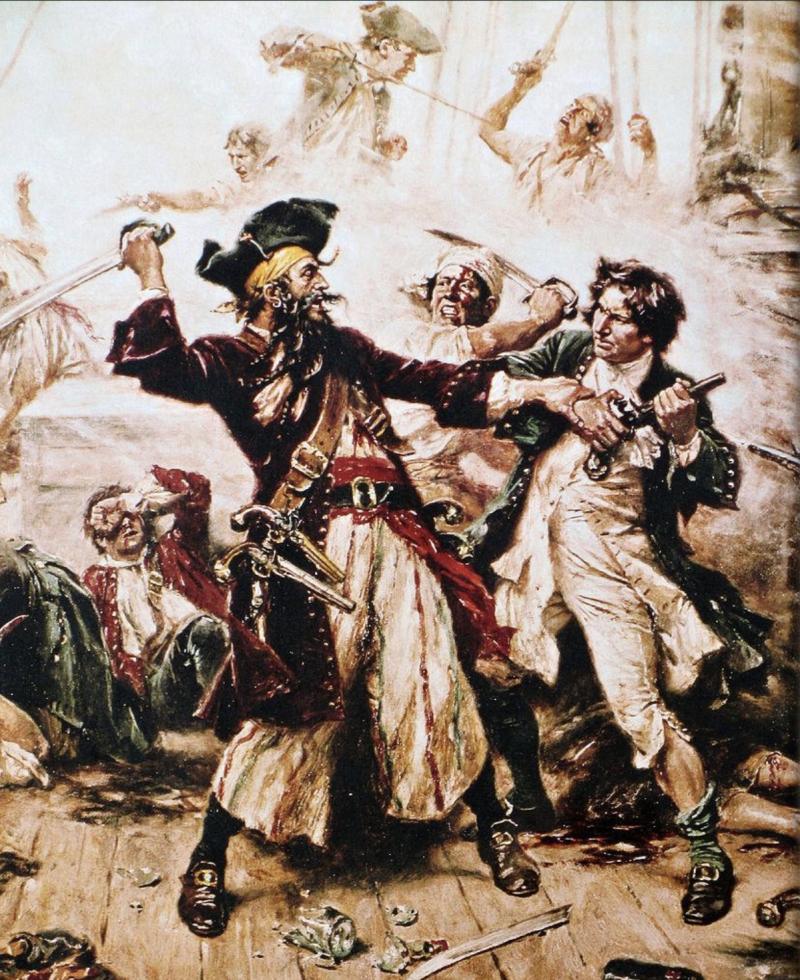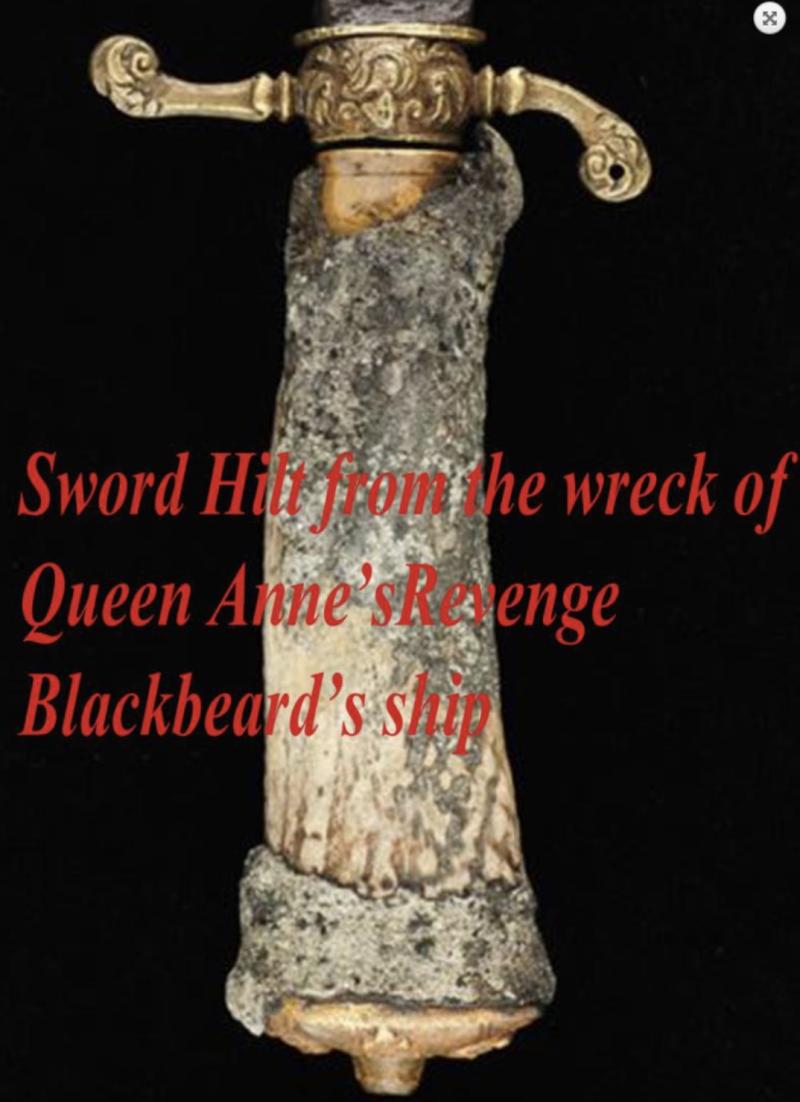A Late 17th to Early 18th Century Hangar Used and Favoured By Naval Officers & Admirals, And Pirate 🏴☠️ Captains From the 17th Century 9 Years War, The Indian French War, The American Revolution & Up To the 1780's
Carved horn grip, single shell guard. Brass hilt with single knuckle bow. Straight fullered blade.
In the days of the early Royal Navy, admirals and captains carried short swords in the pattern of hunting swords, with both straight or curved blades, fancy mounted single knucklebow hilts with principally stag horn, reeded ebony or walrus grips, or carved horn {as has this example}. The hilt could be repousse with a floral and figural design or plain, this one is engraved in the clamshell style. They were also the sword of choice for notorious pirates of the day such as Blackbeard.
There are numerous portraits in the National Portrait Gallery and The National Maritime Musuem that show British Admirals such as Benbow and Clowdesly Shovel holding exactly such swords. John Benbow (10 March 1653 – 4 November 1702) was an English officer in the Royal Navy. He joined the navy aged 25 years, seeing action against Algerian pirates before leaving and joining the merchant navy where he traded until the Glorious Revolution of 1688, whereupon he returned to the Royal Navy and was commissioned.
Benbow fought against France during the Nine Years War (1688–97), serving on and later commanding several English vessels and taking part in the battles of Beachy Head, Barfleur and La Hogue in 1690 and 1692. He went on to achieve fame during campaigns against Salé and Moor pirates; laying siege to Saint-Malo; and fighting in the West Indies against France during the War of the Spanish Succession (1701–1714).
Benbow's fame and success earned him both public notoriety and a promotion to admiral. He was then involved in an incident during the Action of August 1702, where a number of his captains refused to support him while commanding a squadron of ships. Benbow instigated the trial and later imprisonment or execution of a number of the captains involved, though he did not live to see these results. These events contributed to his notoriety, and led to several references to him in subsequent popular culture.
Blackbeard or Edward Teach (c.1680-1718) is one of the most infamous pirates to have ever lived.
Known for his fearsome image and daring acts on land and sea throughout the West Indies and along the North American East coast, his legacy has been the inspiration for many depictions of pirates throughout history. In possibly his most brazen act, Teach used his flotilla to blockade the port of Charlestown in the province of South Carolina. Over the course of a week, nine vessels were stopped and plundered as they attempted to sail out of the harbour, where Teach's fleet was moored.
Teach informed some of his prisoners that his fleet required medical supplies from the colonial government of South Carolina and that if none were provided, all would be beheaded and their ships burned.
Two pirates and a prisoner were sent to the town but when they did not return he moved eight ships into the harbour, causing panic and looting within the town. Shortly after his supplies were delivered and the prisoners released, after reportedly being robbed of all worthy possessions.
This siege represents the height of Teach’s notoriety, not just as a skilled captain but a fierce leader who was not confined to the sea and would maraud where he pleased. Exploits such as these made Teach was one of the most commonly reported pirates in the news and in the print of his age.
Hilt in very nice condition overall, small field repair at the quillon, overall russetted blade . Blade length 18 inches
Code: 25516
795.00 GBP



